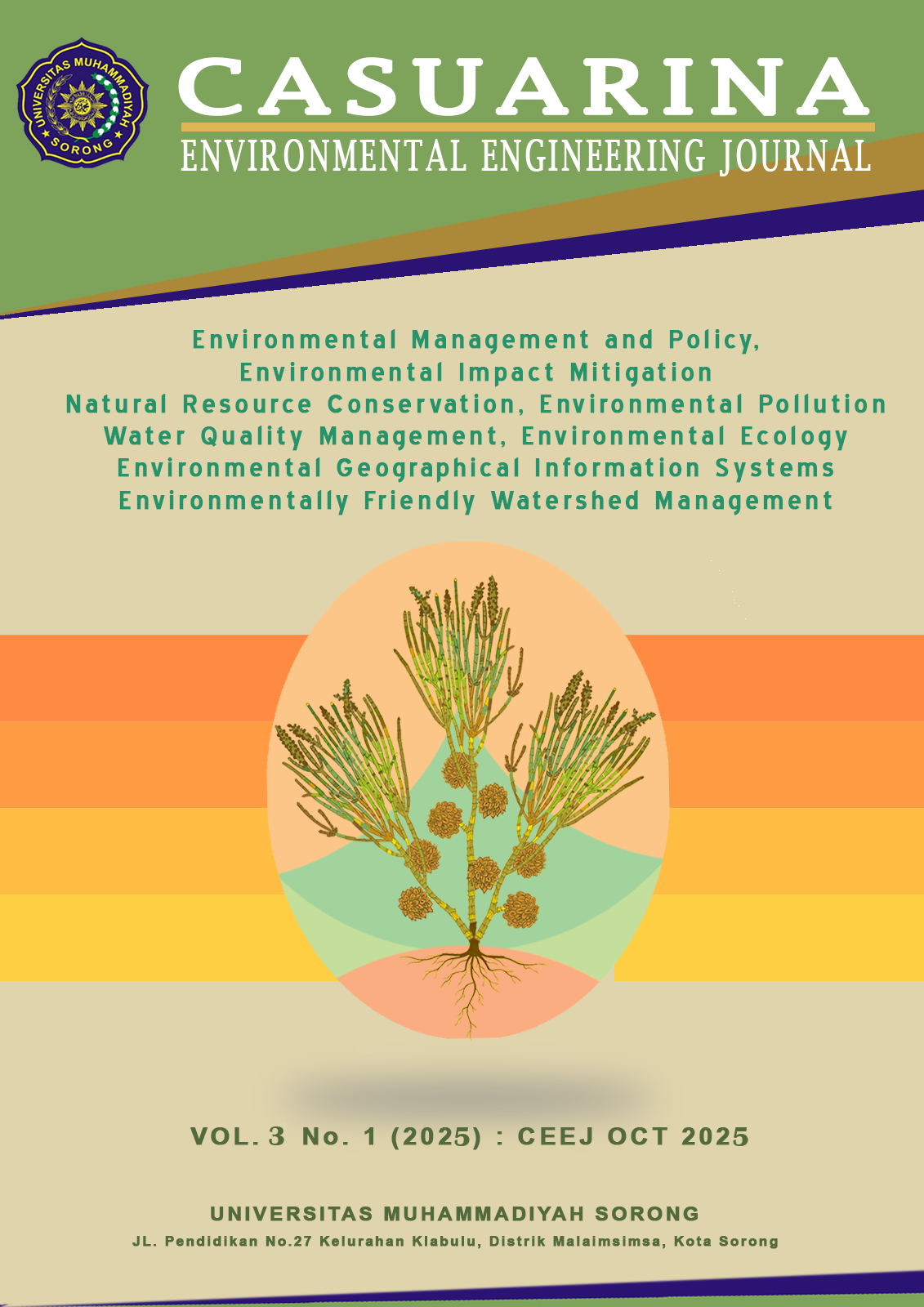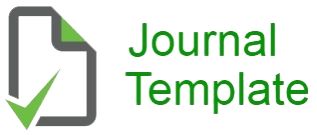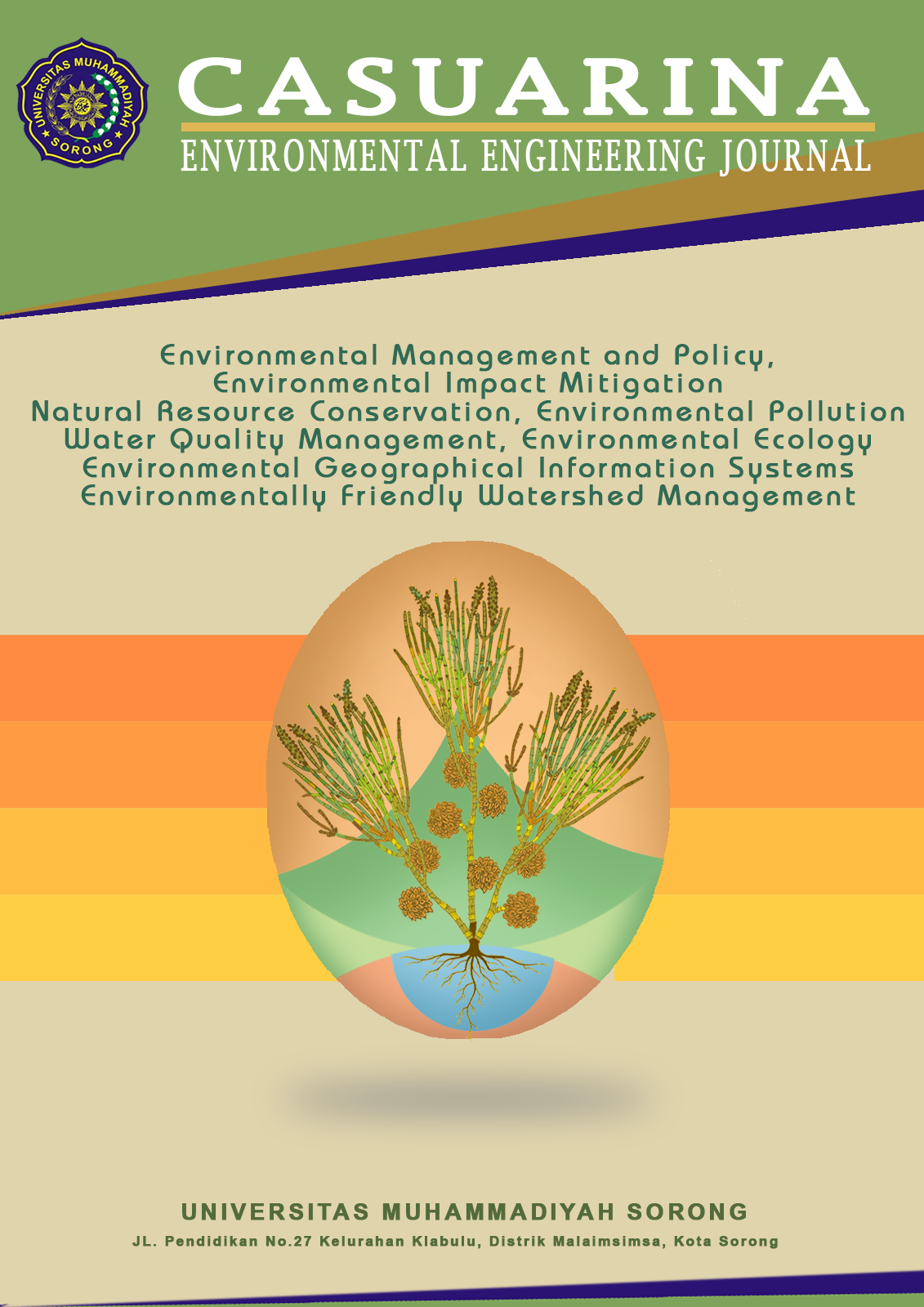Analisis Pola Curah Hujan di Papua Barat Daya
Bahasa Indonesia
DOI:
https://doi.org/10.33506/ceej.v3i1.4798Keywords:
Rainfall, Season, climatology, Southwest PapuaAbstract
The province of Southwest Papua is characterized by its mountainous terrain, which influences the region's precipitation patterns. The typical rainfall distribution in this area takes on an "A" shape, exhibiting a peak of highest rainfall in the middle of the year. This pattern is observed in regions shaped by local features such as topography and wind systems, with significant rainfall typically occurring in June and July. To enhance the accuracy of climate forecasting, Indonesian Agency for Meteorology, Climatology, and Geophysics (BMKG) has revised its climatology data, updating the Normal Rainfall figures from the period 1981-2010 to those from 1991-2020. This updated framework serves as a reference for identifying rainfall types across Indonesian territories, particularly in eastern Indonesia and Southwest Papua. Analysis of rainfall data collected from various monitoring stations in the Southwest Papua region for the years 2020 to 2024 reveals the existence of two distinct rainfall patterns: Local type 1 observed at the Majener, Malagusa, Klasmelek, DEO Sorong Meteorological Station and Sorong Geophysics Station, and Local type 2 noted at the Walal, Klamalu, Mariyai, and Waisai rain posts. The most intense rainfall peaks typically occur in July and August, ranging from 300 - 600 mm per month, whereas the lowest precipitation levels are generally recorded in February, with values between 0 - 100 mm per month.
References
1. Anggraini A, Noveni T, Lubis LH. Analisis karakteristik intensitas curah hujan di Kabupaten Deli Serdang (1413–1428 H). Fisitek: Jurnal Ilmu Fisika dan Teknologi. 2023;6(2).
2. Solihin RR, Ramadan A, Asniar N. Studi analisis perubahan iklim terhadap distribusi curah hujan pada daerah tangkapan air Pataruman. JITSi: Jurnal Ilmiah Teknik Sipil. 2021;1(2):73–82.
3. Ambi FN, Sutadji HI, Geru AS, Louk AC. Analisis kecenderungan (trend) suhu udara dan curah hujan di Pulau Flores (Labuan Bajo, Ruteng, Maumere, dan Larantuka). Jurnal Fisika: Fisika Sains dan Aplikasinya. 2020;5(1):42–56. 4. Sayyendra AP, Andriani N, Ritonga AF, Ariska M. Analisis curah hujan di Papua Barat menggunakan metode Empirical Orthogonal Function (EOF). Journal Online of Physics. 2024;9(3):26–31.
5. Pattipeilohy WJ, Barung FM, Ronsumbre EY. Analisis perubahan pola musim dan distribusi frekuensi curah hujan di Sentani. Buletin GAW Bariri (BGB). 2024;5(1):1–9.
6. Ruqoyah R, Ruhiat Y, Saefullah A. Analisis klasifikasi tipe iklim dari data curah hujan menggunakan metode Schmidt-Ferguson (studi kasus: Kabupaten Tangerang). Jurnal Teori
dan Aplikasi Fisika. 2023;:29–38.
7. Sipayung SB, Avia LQ, Dasanto BD. Analisis pola curah hujan Indonesia berbasis luaran model sirkulasi global (GCM). Jurnal Sains Dirgantara. 2010;4(2).
8. Alfiandy S, Hutauruk RCH, Permana DS. Peran dinamika laut dan topografi terhadap pola hujan tipe lokal di wilayah Kota Palu. Depik. 2020;9(2):173–183.
9. Aldrian E, Susanto RD. Identification of three dominant rainfall regions within Indonesia and their relationship to sea surface temperature. Int J Climatol. 2003;23:1435–1452.
10. Badan Meteorologi, Klimatologi, dan Geofisika (BMKG). Pemutakhiran Zona Musim Indonesia periode 1991–2020. Jakarta: BMKG; 2022. Available from:
https://iklim.bmkg.go.id/bmkgadmin/storage/buletin/Buku_ZOM9120_versi_cetak.pdf
11. Badan Meteorologi, Klimatologi, dan Geofisika (BMKG). Peraturan Badan Meteorologi, Klimatologi, dan Geofisika Nomor 7 Tahun 2019 tentang Penyediaan dan Penyebaran
Prakiraan Musim. Jakarta: BMKG; 2019 [cited 2025 Oct 28]. Available from:
https://peraturan.bpk.go.id/Details/189597/peraturan-bmkg-no-7-tahun-2019
12. Sugiyono. Metode penelitian kuantitatif, kualitatif, dan R&D. Bandung: Alfabeta; 2017.
13. Prasetyo B, Pusparini N. Respon curah hujan Sulawesi terhadap El Niño Modoki. Jurnal
Meteorologi dan Geofisika. 2019;20(1):21–
Downloads
Published
How to Cite
Issue
Section
License
Copyright (c) 2025 Casuarina: Environmental Engineering Journal

This work is licensed under a Creative Commons Attribution-NonCommercial-ShareAlike 4.0 International License.
Please find the rights and licenses in Casuarina: Environmental Engineering Journal. By submitting the article/manuscript of the article, the author(s) agree with this policy. No specific document sign-off is required.
1. License
The non-commercial use of the article will be governed by the Creative Commons Attribution license as currently displayed on Creative Commons Attribution-NonCommercial-ShareAlike 4.0 International License.
2. Author(s)' Warranties
The author warrants that the article is original, written by the stated author(s), has not been published before, contains no unlawful statements, does not infringe the rights of others, is subject to copyright that is vested exclusively in the author, and free of any third party rights, and that any necessary written permissions to quote from other sources have been obtained by the author(s).
3. User/Public Rights
Casuarina: Environmental Engineering Journal's spirit is to disseminate articles published are as free as possible. Under the Creative Commons license, Casuarina: Environmental Engineering Journal permits users to copy, distribute, display, and perform the work for non-commercial purposes only. Users will also need to attribute authors and Casuarina: Environmental Engineering Journal on distributing works in the journal and other media of publications. Unless otherwise stated, the authors are public entities as soon as their articles got published.
4. Rights of Authors
Authors retain all their rights to the published works, such as (but not limited to) the following rights;
- Copyright and other proprietary rights relating to the article, such as patent rights,
- The right to use the substance of the article in own future works, including lectures and books,
- The right to reproduce the article for own purposes,
- The right to self-archive the article (please read our deposit policy),
- The right to enter into separate, additional contractual arrangements for the non-exclusive distribution of the article's published version (e.g., post it to an institutional repository or publish it in a book), with an acknowledgment of its initial publication in this journal (Casuarina: Environmental Engineering Journal).
5. Co-Authorship
If the article was jointly prepared by more than one author, any authors submitting the manuscript warrants that he/she has been authorized by all co-authors to be agreed on this copyright and license notice (agreement) on their behalf, and agrees to inform his/her co-authors of the terms of this policy. Sentralisasi will not be held liable for anything that may arise due to the author(s) internal dispute. Sentralisasi will only communicate with the corresponding author.
6. Royalties
Being an open accessed journal and disseminating articles for free under the Creative Commons license term mentioned, author(s) aware that Casuarina: Environmental Engineering Journal entitles the author(s) to no royalties or other fees.
7. Miscellaneous
Casuarina: Environmental Engineering Journal will publish the article (or have it published) in the journal if the article editorial process is successfully completed. Casuarina: Environmental Engineering Journal's editors may modify the article to a style of punctuation, spelling, capitalization, referencing, and usage that deems appropriate. The author acknowledges that the article may be published so that it will be publicly accessible and such access will be free of charge for the readers as mentioned in point 3.








